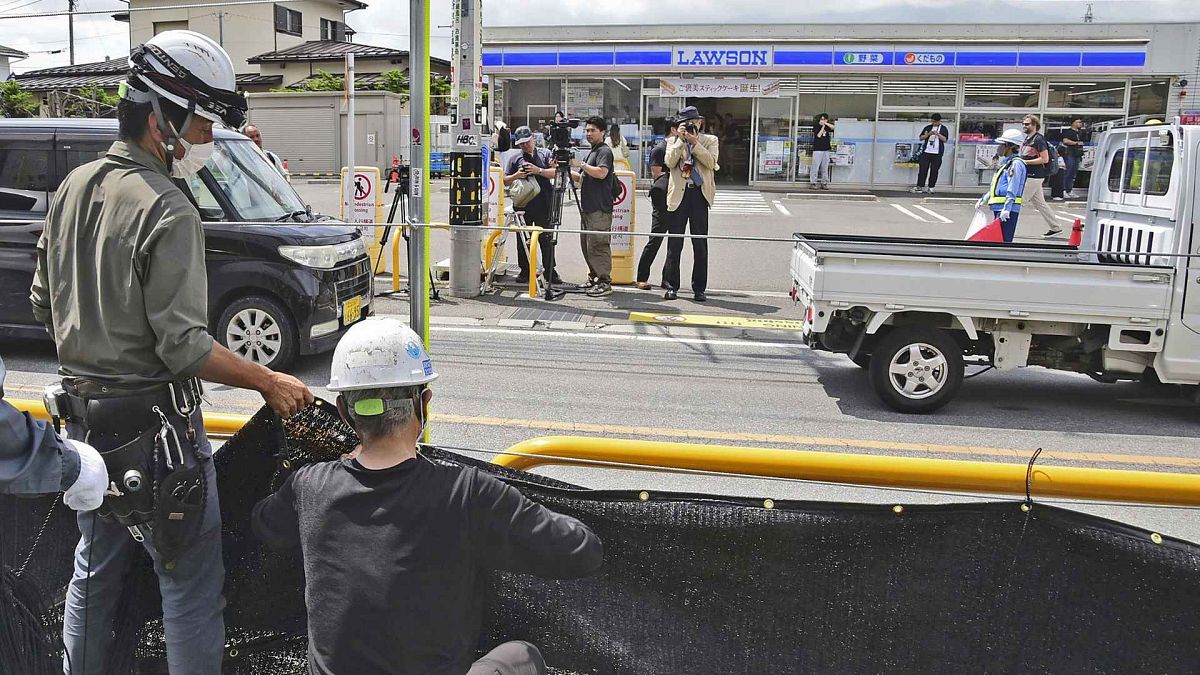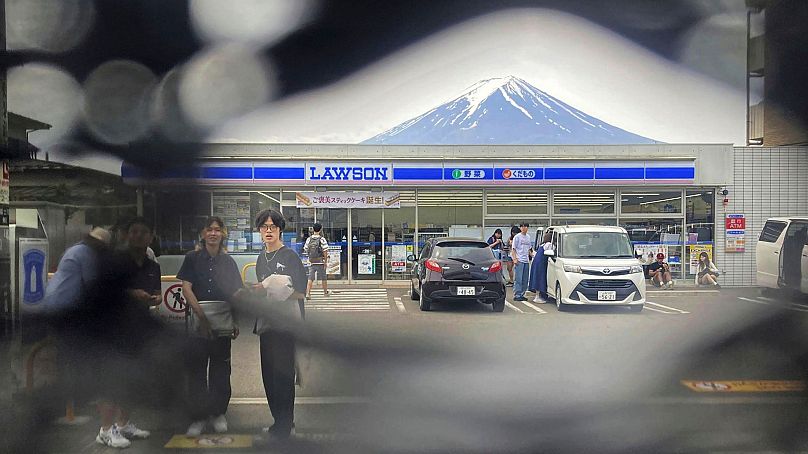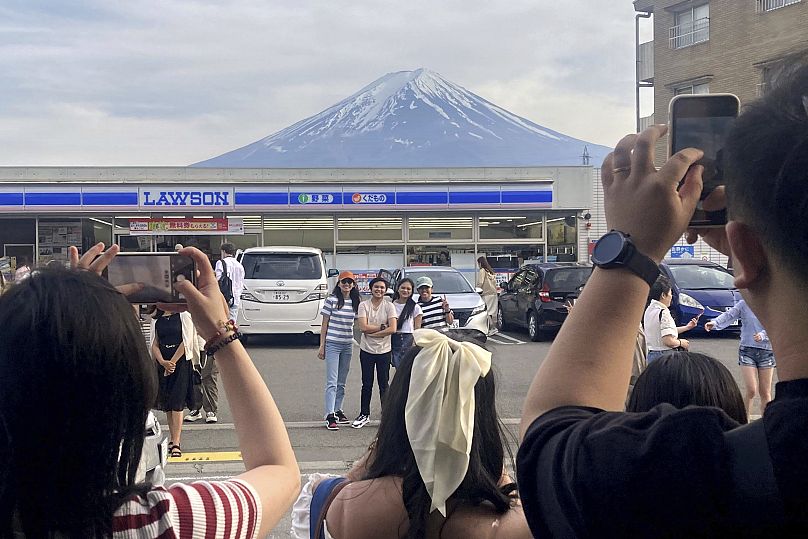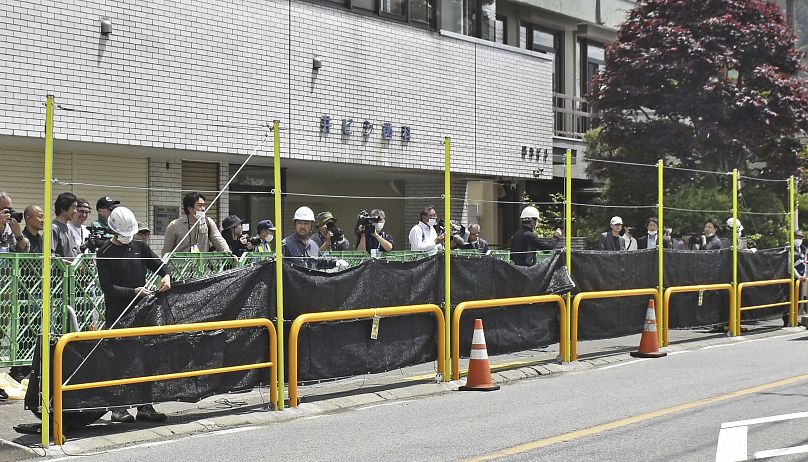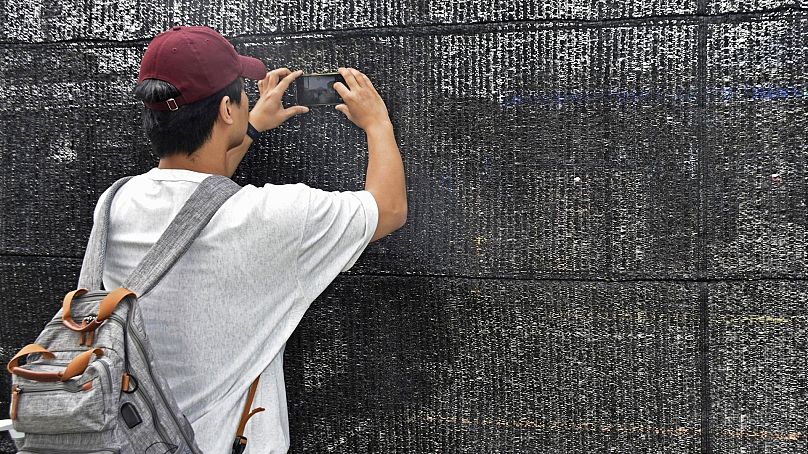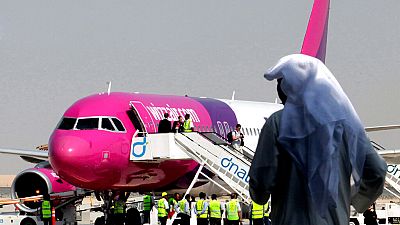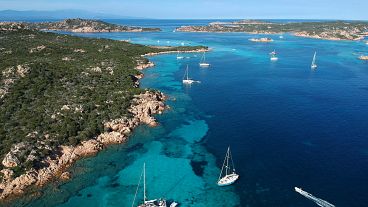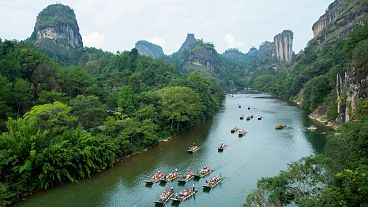Authorities say the screen will be reinstalled if tourists return in large numbers.
A town in Japan got so fed up with tourists earlier this year that they built a huge fence blocking the view of the attraction they are coming for - the famous Mount Fuji.
The 20-metre long and 2.5-metre high fence covered with a black mesh which prevented tourists from taking selfies with the landmark has now been removed.
This was initially done as a precaution when a typhoon was forecast last week, but authorities now say it will remain down for the time being.
They warn, however, that it could be reinstalled if tourists return in large numbers.
"We wanted to see what would happen," an official told AFP news agency.
"There are still some people who come to the place, but we no longer find many people suddenly rushing out into the traffic to cross the road. We feel like it has been effective," he added.
Why was a screen put up to block Mount Fuji?
The town of Fujikawaguchiko is known to offer some of the best views of the Japanese mountain. But locals had had enough of tourists blocking pavements and stopping traffic to get the perfect shot.
A particularly popular photo location was outside a Lawson convenience store, from where a photograph taken at a particular angle would make it seem as if Mt. Fuji was sitting atop the shop's roof. The tourists, mostly foreigners, even dubbed the spot “Mt. Fuji Lawson.”
"Kawaguchiko is a town built on tourism, and I welcome many visitors, and the town welcomes them too, but there are many things about their manners that are worrying,” says Michie Motomochi, owner of a cafe serving Japanese sweets near the photo spot.
Motomochi mentioned littering, crossing the road with busy traffic, ignoring traffic lights and trespassing into private properties.
Camera-sized holes appeared in Mount Fuji screen
The town spent 1.3 million yen (€7,700) to install the black mesh net, and additional fences along the sidewalk.
But in the beginning, it didn't seem like tourists had much respect for the measure.
Small holes appeared in the screen, which tourists exploited to snap the iconic view. Within just a week of the fence being built, officials had found around 10 holes, all at eye level, and all apparently just the right size to fit a camera lens through.
Since then, however, the screen has helped ease congestion in the area, according to officials.
Mount Fuji introduces booking system
Tourist crowds have caused other problems on the mountain too.
The Yamanashi prefecture, also home to the Yoshida Trail - the most popular of the four routes to summit the 3,776-metre high mountain - introduced a booking system ahead of this year's Fuji climbing season to ease overcrowding, littering and safety risks.
Under the new plan, only up to 4,000 climbers are allowed to enter the trail per day for a hiking fee of 2,000 yen (about €18), with an option of donating an additional 1,000 yen (about €9) for conservation during the climbing season, which started 1 July and runs until 10 September.
Designated a UNESCO World Cultural Heritage site in 2013, Mt. Fuji used to be a place of pilgrimage.
Today, it's popular among hikers who climb the summit to watch the sunrise. But tons of trash left behind, including plastic bottles, food and even clothes, have become a major concern.
Where else is trying to crack down on overtourism?
Kawaguchiko isn't the first place to try and reclaim their home from tourists, though theirs is one of the boldest pushbacks we've seen so far.
Also in Japan, the Geisha district of Kyoto has closed off some streets to tourists after "misbehaviour".
Menorca's most popular tourist attraction, a small town with white-washed houses, has introduced visiting hours in a bid to quell visitor numbers.
Venice, one of Italy's most popular destinations, has been on a years-long battle to manage visitors, who often outnumber residents. They have recently introduced a daytripper fee as well as banning loudspeakers.












